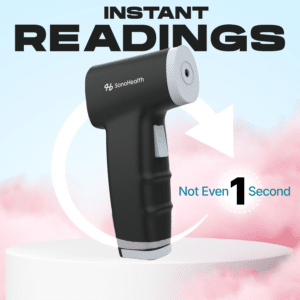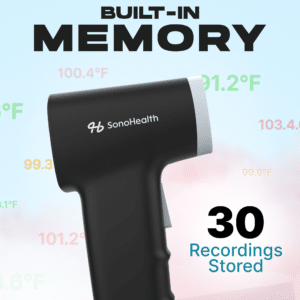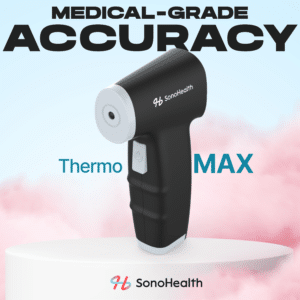Thermometer gun or infrared thermometer has become an indispensable device for households. It provides quick, accurate, and reliable readings despite non-contact temperature measurements. However, like any precision instrument, infrared thermometers require proper calibration and maintenance to ensure their accuracy over time. This comprehensive guide will walk you through the steps to properly calibrate and maintain your infrared thermometer for consistent and accurate readings.
Understanding Infrared Thermometers
How thermometer gun works
An IR thermometer gun tends to measure the temperature of the body or object by detecting the infrared radiation emitted by an object. All objects emit infrared radiation, and the amount emitted increases with temperature. An infrared thermometer focuses this radiation onto a detector, typically a thermopile, which converts the infrared energy into an electrical signal. This signal is then processed to produce a temperature reading.
Infrared thermometer types
- Handheld Infrared Thermometer: Often called thermometer gun or infrared temperature gun, applied for different purposes, from industrial maintenance to food safety checks.
- Medical Infrared Thermometer: Designed for non-contact measurement of human body temperature.
Importance of infrared temp gun calibration
Calibration is the process of thermometer adjustment to ensure its accuracy. For an infrared thermometer gun, calibration involves comparing its readings with a known temperature standard and adjusting it if necessary. Regular calibration is essential for several reasons:
- Accuracy: Ensures that the thermometer provides correct temperature readings.
- Reliability: Increases confidence in the measurements.
- Compliance: Meets industry standards and regulations, especially in food safety and medical fields.
How to calibrate a forehead thermometer?
For the calibration of the infrared temp gun, you may require the below equipment:
- Blackbody Calibrator: A device that provides a stable and known temperature reference.
- Thermocouple or Platinum Resistance Thermometer (PRT): Used to measure the actual temperature for comparison.
- Emissivity Tape or High-Emissivity Surface: Ensures accurate readings by the thermometer.
Calibration Procedure
Calibrating your thermometer gun is essential for ensuring accurate temperature readings. This process involves setting up a stable temperature reference, measuring it with a precise instrument, and adjusting your infrared temp gun to match this reference. The following steps outline a detailed calibration procedure to maintain the accuracy of your infrared thermometer. By carefully following the below steps, you can be confident that your thermometer gun will deliver reliable readings across its operational range, making it a dependable tool for all your temperature measurement needs.
- Set Up the Blackbody Calibrator: Place the blackbody calibrator in a stable environment and allow it to reach a steady temperature.
- Measure the Reference Temperature: Use the thermocouple or PRT to measure the temperature of the blackbody surface. This will be your reference temperature.
- Set the Emissivity: Ensure that the emissivity setting on your infrared thermometer matches that of the blackbody calibrator. Most calibrators have an emissivity of 0.95 or 0.97.
- Take Readings: Aim the infrared thermometer at the blackbody surface and take multiple readings. Ensure that the thermometer gun is at the correct distance according to its specifications.
- Compare Readings: Compare the readings from the infrared thermometer with the reference temperature.
- Adjust if Necessary: If there is a significant difference between the thermometer readings and the reference temperature, adjust the calibration settings on the thermometer, if possible. Some advanced models allow for manual calibration adjustments.
- Repeat: Repeat the process at different temperatures to ensure accuracy across the thermometer’s range.





